Scott Haugen is an outdoor legend, and during his illustrious outdoor tenure, he has harvested numerous trophy-class elk. Scott’s gear advice is second-to-none, and if you plan to chase elk out West this fall, keep reading!
by Scott Haugen
I’d been set up for nearly three hours, waiting for a big bull to emerge from a timbered ridge across the canyon. I located the bull earlier that day using binoculars. Then I sized it up with a spotting scope, making sure it was a big bull warranting a long hike to reach a solid shooting position.
Once I reached my shooting landmark, I ranged multiple points where I thought the bull might come out. The distances were between 360 and 435 yards, which was not a problem. I was shooting a Nosler Model 48 chambered in .325 WSM, one of my favorite elk rifles. The 180-grain Nosler AccuBonds I used is another elk favorite. The rifle was topped with a Trijicon AccuPoint, 3-9×40, with a green crosshair reticle.
The sun was at my back, and the thermals were still rising, but soon they’d be reversing direction in the cooling, late afternoon air. I accounted for this, so I dropped further down the ridge from where I would have been earlier in the day when thermals were constantly rising. I wanted to keep my scent below the elk when the wind shifted.
Sitting in the shade, I used a pine tree was behind me, breaking up my body outline. My tripod shooting sticks were set to the perfect height. With a bottle of water at my side, I stayed hydrated. It had been a hard day, and the October temperatures were warm. Continually, I checked the wind.
The bull stepped out almost three hours to the minute I got set up. All that remained was holding my crosshairs steady and squeezing the trigger. The shot was simple because I was fully prepared.
It was a long night of packing meat. I was prepared for that, too.
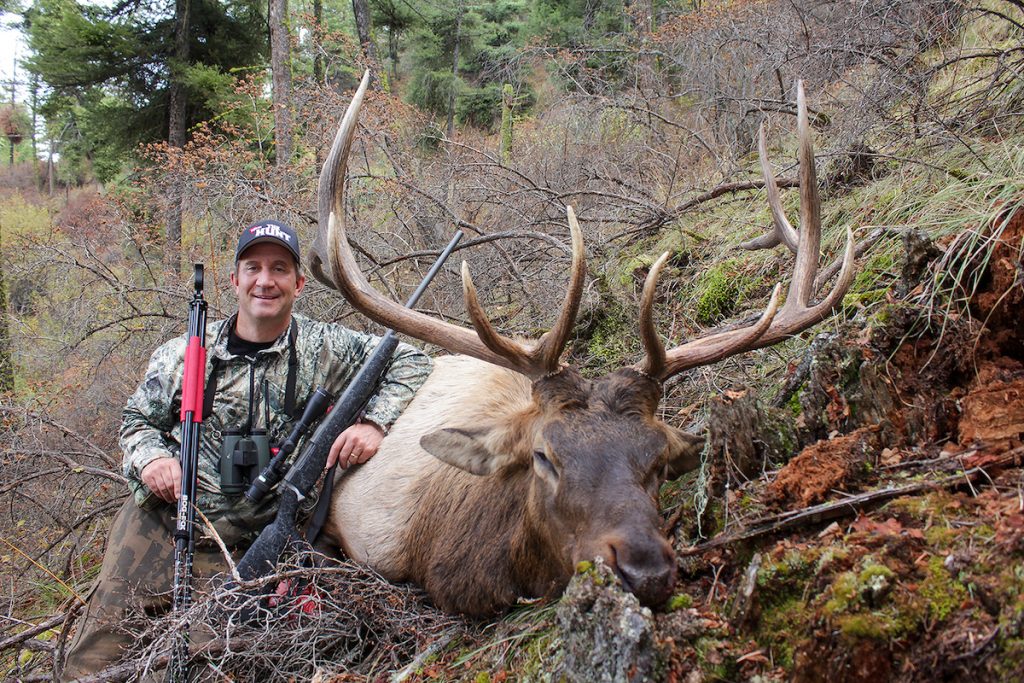
When it comes to elk hunting, there are certain pieces of gear I can’t do without. Having been on many elk hunts throughout the West over the decades, these are the pieces of elk gear I consider to be must-haves.
Guns & Ammo
When it comes to elk, don’t under-gun it. These are big animals, and they’re tough. My minimum caliber of choice is a .30-06, with a .300 WSM, .300 Ultra Mag, 7mm, or .325 WSM being preferred calibers. An efficiently expanding bullet with 175 grains being the minimum size is ideal for bullets. I’ve killed more elk with Nosler AccuBonds than any other, and I love their performance.
Here’s one to consider if you’re into wildcat rounds and custom-made rifles. A few years ago, I had a noted gunmaker, Curt Mendenhall of Curt’s Custom Guns in Oakland, Oregon, build me a 28 Nosler. It’s the best shooting, lightest weight — but with surprisingly minimal recoil — big game rifle I’ve ever shot.
Curt built my rifle with a full titanium Pierce action. The Benchmark match grade barrel sits in an MPI Kevlar stock weighing 15 ounces. Hawkins Precision aluminum rings are machined with a 25 MOA to extend the range. A Triggertech rounds out the build. The rifle weighs 5.5 pounds.
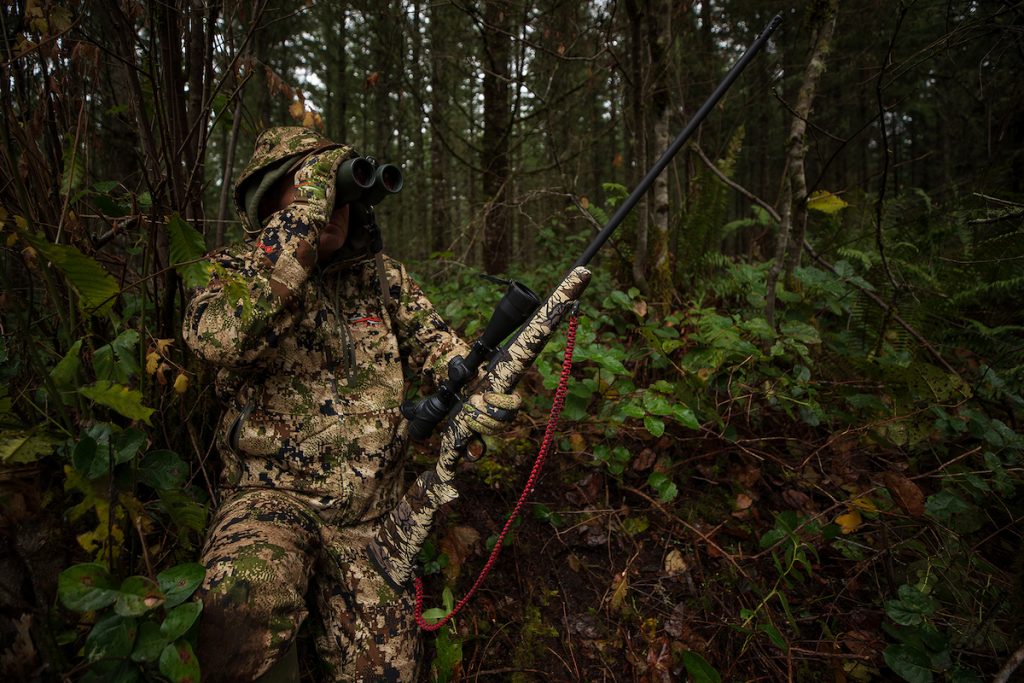
Topped with a Trijicon AccuPoint 4-16×50 with a capped elevation adjuster, scope caps, scope dust cover, and a slender custom sling crafted by Oregon Paracord, the total weight of my setup is 7.25 pounds. I shoot 175-grain Nosler AccuBond Long-Range factory ammo moving at 2,900 fps. I have been elated with this bullet’s performance on elk and numerous other big-game animals.
With a 100-yard zero, this load shoots -2.4″ at 200 yards, -9.2″ at 300 yards, and -20.8″ at 400 yards. My rifle is dialed into 1,200 yards with stunning precision. For me, this is the ultimate elk rifle, performing excellently in brush country, out to as far as I’ll ever need or want to shoot.
Shooting Rest
I’m a stickler for solid shooting rests. I don’t work all year to be in top physical shape and spend time and money to HOPEFULLY connect on a shot. I’m not pulling the trigger if I’m not 100 percent certain I will kill an elk. This is where a steady shooting rest comes in handy. I like shooting prone off a gun-mounted bipod but rarely is elk habitat conducive for this setup.
I’ve shot more elk using tripod shooting sticks than any other rest. Whether sitting, kneeling, or standing, tripods are much more stable than bipods and monopods. I like adjustable tripod shooting sticks that I can hike with.
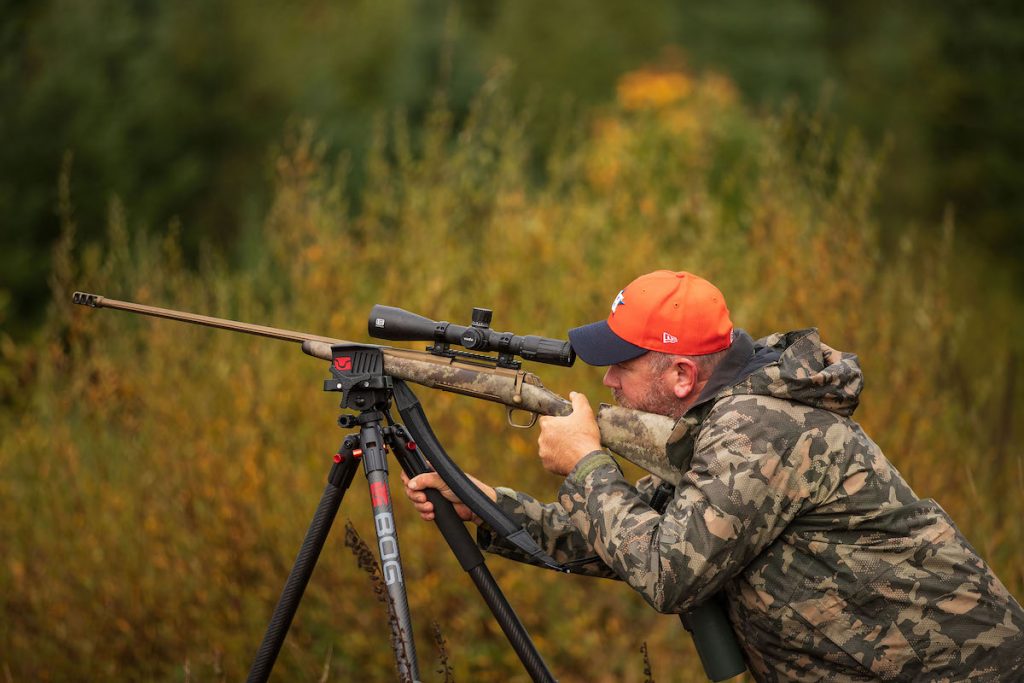
I like Bog Hunt adjustable tripods because they’re quick, easy to adjust, and stable, and the fulcrum is close to the intersection of the sticks, not elevated by a pistol grip.
My ultimate tripod of choice is Bog’s Deathgrip. I use the carbon fiber model on backcountry hunts on horseback and the aluminum model on day hunts when I only have a little gear to carry. I’m taking the lightweight sticks if hiking extended distances where ounces and space matter.
Boots
Boots are one of the most critical elements of elk hunting. If your feet are out of commission, the hunt stops. Be sure to remember that when you’re trying to decide between a pair of sub-par boots and those that showcase backcountry-in-mind craftsmanship.
Meindl has been my go-to boot for years. I’ve worn them on hundreds of big game hunts around the world. For early-season elk hunts, I love their Comfort Fit Hiker. This boot is waterproof, uninsulated, and offers excellent comfort and stability on rocky, hard ground. For mid-season hunts, I love Meindl’s Comfort Fit Extreme. The pair weighs only 4.25 pounds and is waterproofed with Gore-Tex lining. For late-season elk quests in the cold, snow, and ice, I like Meindl’s Kibo GTX Hunter 600s. These are the first boots in the U.S. to feature Gore Air Fiber 600 comfort technology that combines durability, waterproofness, and breathability with high-bulk fleece insulation. These boots are warm and lightweight.
Hunt Garb
As for clothing, it’s come a long way from when I first hunted elk over 40 years ago. Gone are blue jeans, flannel shirts, and Levi jackets. Here to stay are high-performance clothes that keep you comfortable, safe, and hunting all day long. I’ve been impressed with Sitka’s line of clothes the past two seasons.

Sitka has multiple systems that work independently and in combination with one another. They have something for every element of elk hunting. For early-season hunts where heat and biting bugs are a concern, I like Sitka’s Equinox Guard collection, which features a hoody, pants, and glove designed to be worn together to minimize the impact of mosquitos, ticks, and other bugs. The system is lightweight and cool, too. Sitka has a complete line of activewear designed to keep your body temperature at the ideal level for mid-season and late-season hunts.
Base your selection on when and where you’ll be hunting and what the weather is likely to be. I’ve spent many days in their Jetstream Jacket, Mountain Pant, Ambient Hoody, and more. I love their Merino Core base layer, top and bottom. Sitka’s Thunderhead Raingear has performed excellently on multiple hunts in the rain for me throughout the Pacific Northwest.
Backpack
Recently, my backpack has been the ALPS ELITE Ultralight Frame & 3800 Pack. I’m a fan of compression straps due to the rugged, steep terrain in which elk are hunted because balance with a bulky, heavy load is controlled by keeping it close to the pack frame and your torso, which this pack achieves. The sturdy, high-performance, thermoplastic composite frame weighs only 3 pounds 10 ounces and is easy to adjust for torso length. 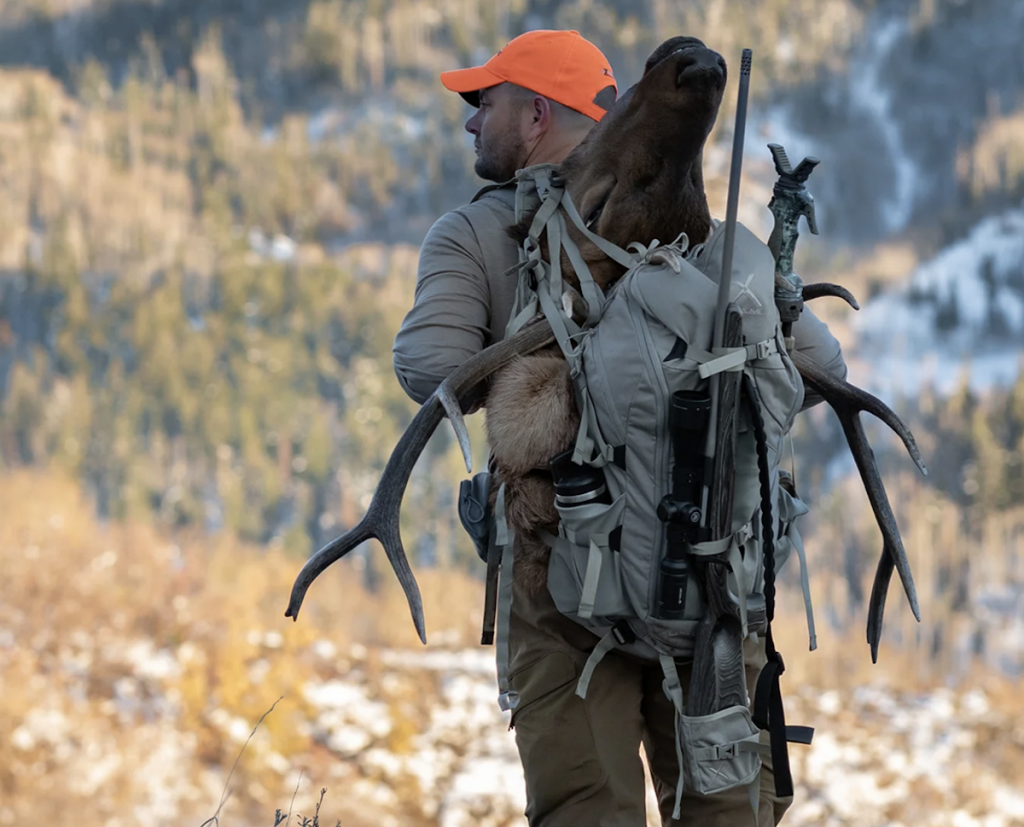
I love the ease of tightening and loosening the waist belt and its security. The padding design of the waist belt, shoulder straps, and back is comfortable and efficient. Load lifting straps allow you to tighten a heavy pack quickly. The two hydration port options are great because you can’t drink too much water when hunting elk. When packing out game, remove the pack, strap the game to the frame, then replace the pack for the hike out— total weight is 5 pounds 13 ounces.
Glass
If you are looking for a lightweight, quality, affordable glass that allows you to glass in comfort for hours, without eye fatigue, check out Leupold’s BX-2 Alpine HDs.
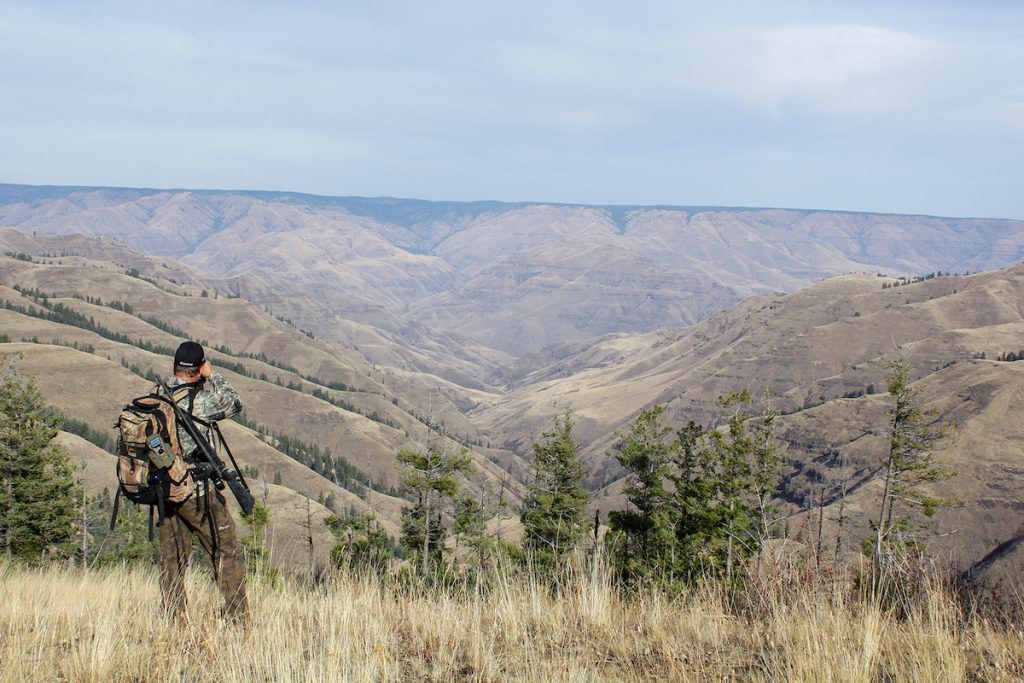
A bit overlooked by elk hunters, this bino’ delivers a bright image and can take a beating. The lightweight magnesium body is durable, and the glare reduction, light transmission, and quality resolution make them ideal for glassing everything from open hillsides to dark timber. Precision focus adjustments, waterproof, fog proof, and guaranteed for life, the BX-2 Alpine HD comes in 8×42, 10×42, 10×52, and 12x52mm models. Their RX-1400i TBR Rangefinder is fast and accurate, and I recommend watching for their new BX-4 Range HD, a 10×42 range-finding binocular that I can’t wait to try.
A spotting scope is one of my most essential pieces of gear, as it saves miles of walking and valuable time. My go-to spotting scope is Swarovski’s ATX Eyepiece Module and a 65mm, 85mm, and 95mm objective lens. Which lens I use depends on where I’m hunting and the weather conditions.
Calls
I’ve called in many bulls during rifle season and located many more that I’ve put a move on. I base my calling on elk behavior and their reaction to the sounds as I deliver them. Last season the bulls and cows loved the sweet sounds of the Slayer elk calls I used, all made in the U.S.A.
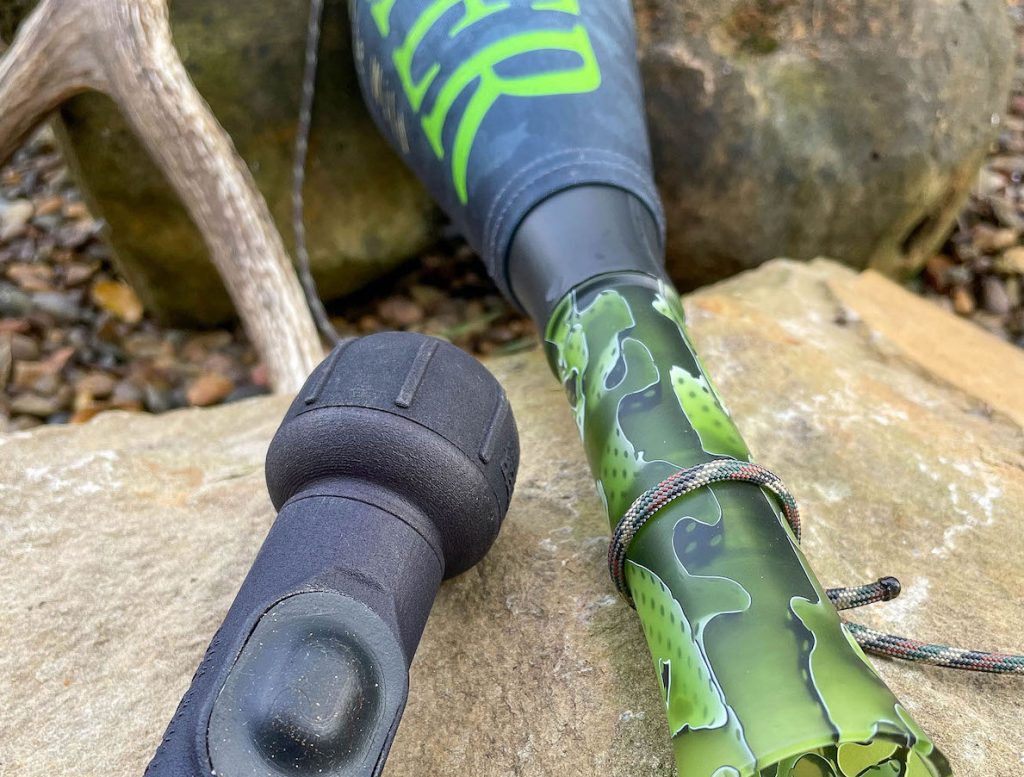
Slayer’s Archangel Acrylic Elk Call created some of the best-sounding bugles I’d ever made. The crisp range of sounds made me a believer the first time I used it, and bulls responded. Their Enchantress Push Button Elk Call is one all hunters who struggle with diaphragm calls will want to check out. The range of cow and calf sounds this call allows you to make, and the quality of every note will give you immediate confidence, and that’s what kills elk.
There you have it, my most prized pieces of elk gear. It’s never too early to start planning and preparing for elk season because it will be here before you know it.





